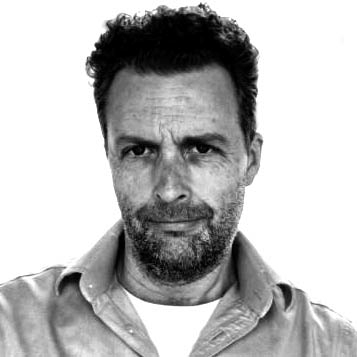In a footnote to their monumental three-volume technical analysis of the painted panels of the 16th-century Netherlandish painter Pieter Bruegel the Elder, Christina Currie and Dominique Allart acknowledge an unlikely source of help: “We thank Serge Lodrini, Chief Superintendent, Liège Police, for examining these prints for us.”
The prints in question are fingerprints, which Pieter Bruegel has left in several of his works—one by a hole in the ice, for instance, in Winter Landscape with a Bird Trap; another near the dozing cat in Dormition of the Virgin. Bruegel, it seems, occasionally used the side of his thumb or finger to break up the still-tacky glaze, or lighten the paint. Unfortunately, the chief superintendent (or, more likely, his uncredited laboratory) was unable to find sufficient “characteristic identification points” to tie the paintings together—pin the deed on the man, so to speak.
Not that there is much doubt as to attribution.
A Sure Sign
Bruegel was a great documenter of his own work, a body of 42 or so surviving painted panels and a slightly larger number of drawings, most of which are signed and dated. And yet, for all the great stamp of character on his works, for all his originality and forthright, chiseled Roman signature—BRVEGEL—he remains elusive. We know that he died in 1569 at the relatively young age of 42 (or, possibly, a bit older), that he divided his working life between Antwerp (probably) and Brussels (certainly), that he traveled to Italy for two years as a young man.
We also know that when he died, Bruegel left two young sons, Pieter and Jan, both of whom would go on to be painters and founders of a proliferating painting dynasty—17th-century Netherlandish art is awash with Bruegels. Bruegel the Elder was a painter of single masterpieces. He rarely repeated a composition or an idea (and never without significant variation), and did not run a large workshop; while many of his contemporaries industrialized their process, churning out copy after copy of a popular composition, he dwelled slowly on one object at a time.

His sons were not so particular. His eldest son, Pieter Bruegel the Younger, made a long and fruitful career producing faithful, but not identical, copies of his illustrious father’s work. He would have seen his father’s original panels only in rare cases, however, and would have relied on his inheritance of sketches and traceable drawings (known as “cartoons”). And so discrepancies creep in.
Bruegel the Elder was a painter of single masterpieces.
Some of the Younger’s panels share the same gallery space as the Elder’s originals, and you can play spot-the-difference. In the Musées Royaux des Beaux-Arts, in Brussels, for example, his copy of The Census at Bethlehem hangs near his father’s original. At first glance they are identical: a snowy village scene with perhaps a hundred figures going about their business, and Mary and Joseph arriving unobtrusively, lost in the crowd.
But if you pace back and forth between the two panels, you’ll notice that the Younger has left out some figures which the father must have added as he was finishing his panel and which are not on the cartoons: a tiny girl shooing geese; a boy pulling on skates. And then, the Younger is left guessing as to color. For example, he inadvertently inverts the color scheme on the dress of a female figure in the bottom right corner of the panel—in the original she has a red overskirt and a green underskirt; in this and every copy by the Younger (at least 12 survive), the colors are reversed, and the white apron is now blue.
The son can barely have remembered the father, but he spent his life obsessively working him up (unlike his younger brother, Jan, who also copied his father’s work, but developed in time a strong painterly direction and reputation of his own). As far as I know, there are no fingerprints in the Younger’s body of work to submit to the Liège forensic laboratory, but if we are looking for motives in all this material evidence, we might venture into interesting (if highly speculative) territory: here is a son at once appropriating and trying to absorb his much greater father, but also stubbornly establishing his own signature—his own fingerprint, if you like. Catch him if you can.
Toby Ferris’s Short Life in a Strange World: Birth to Death in 42 Panels is out now from Harper

